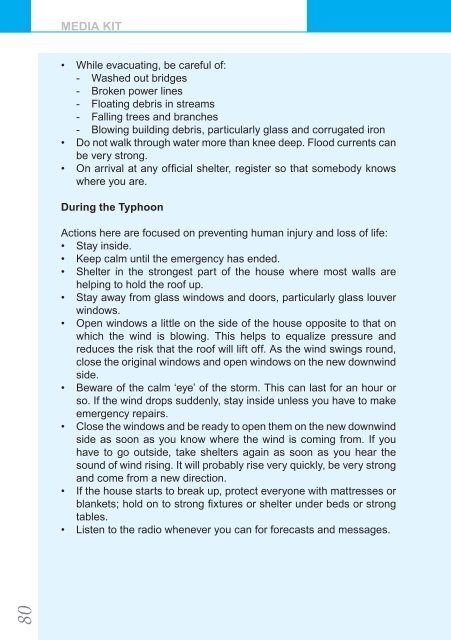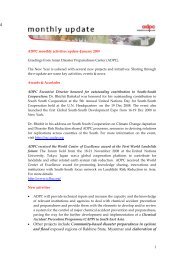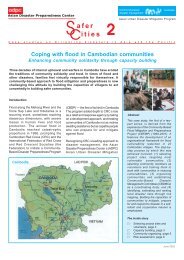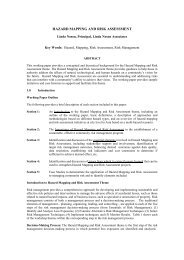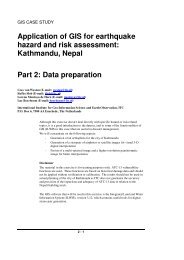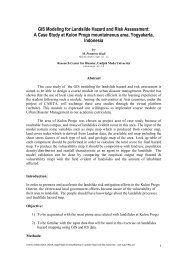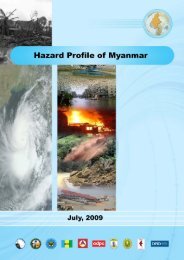community-based disaster risk management and the media media kit
community-based disaster risk management and the media media kit
community-based disaster risk management and the media media kit
You also want an ePaper? Increase the reach of your titles
YUMPU automatically turns print PDFs into web optimized ePapers that Google loves.
80<br />
MEDIA KIT<br />
• While evacuating, be careful of:<br />
- Washed out bridges<br />
- Broken power lines<br />
- Floating debris in streams<br />
- Falling trees <strong>and</strong> branches<br />
- Blowing building debris, particularly glass <strong>and</strong> corrugated iron<br />
• Do not walk through water more than knee deep. Flood currents can<br />
be very strong.<br />
• On arrival at any offi cial shelter, register so that somebody knows<br />
where you are.<br />
During <strong>the</strong> Typhoon<br />
Actions here are focused on preventing human injury <strong>and</strong> loss of life:<br />
• Stay inside.<br />
• Keep calm until <strong>the</strong> emergency has ended.<br />
• Shelter in <strong>the</strong> strongest part of <strong>the</strong> house where most walls are<br />
helping to hold <strong>the</strong> roof up.<br />
• Stay away from glass windows <strong>and</strong> doors, particularly glass louver<br />
windows.<br />
• Open windows a little on <strong>the</strong> side of <strong>the</strong> house opposite to that on<br />
which <strong>the</strong> wind is blowing. This helps to equalize pressure <strong>and</strong><br />
reduces <strong>the</strong> <strong>risk</strong> that <strong>the</strong> roof will lift off. As <strong>the</strong> wind swings round,<br />
close <strong>the</strong> original windows <strong>and</strong> open windows on <strong>the</strong> new downwind<br />
side.<br />
• Beware of <strong>the</strong> calm ‘eye’ of <strong>the</strong> storm. This can last for an hour or<br />
so. If <strong>the</strong> wind drops suddenly, stay inside unless you have to make<br />
emergency repairs.<br />
• Close <strong>the</strong> windows <strong>and</strong> be ready to open <strong>the</strong>m on <strong>the</strong> new downwind<br />
side as soon as you know where <strong>the</strong> wind is coming from. If you<br />
have to go outside, take shelters again as soon as you hear <strong>the</strong><br />
sound of wind rising. It will probably rise very quickly, be very strong<br />
<strong>and</strong> come from a new direction.<br />
• If <strong>the</strong> house starts to break up, protect everyone with mattresses or<br />
blankets; hold on to strong fi xtures or shelter under beds or strong<br />
tables.<br />
• Listen to <strong>the</strong> radio whenever you can for forecasts <strong>and</strong> messages.


